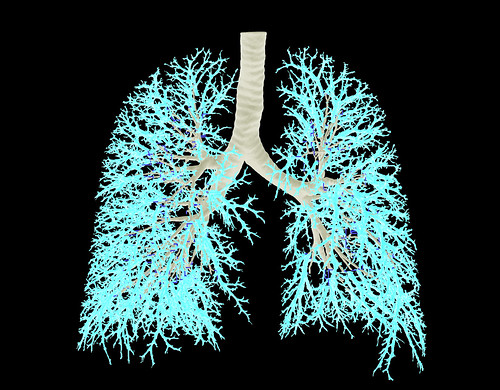Novel glimpses into early lung development

For most prematurely born infants, it's not their tiny size itself that makes life a struggle. Rather, it's the development of their lungs that spells the difference between life and death
In a bid to learn more about the lungs to help such children, scientists around the nation are working together to develop a molecular atlas of the developing human lung during late pregnancy and early childhood. As part of the LungMAP project, scientists at the Department of Energy's Pacific Northwest National Laboratory have gotten one of the most in-depth looks ever at the developing lung, characterizing hundreds of lipids and thousands of proteins from samples as small as just 4,000 cells.
The PNNL team, directed by Charles Ansong, published two papers in Scientific Reports:
- Geremy Clair and Paul Piehowski looked at how proteins change during normal lung development in the alveoli, the tiny sacs where the action happens, with oxygen entering and carbon dioxide exiting the body. The team characterized and tracked changes in more than 3,400 proteins from just 4,000 cells in the alveoli, which produce surfactant, a vital substance in the lungs and one that often does not work properly in prematurely born infants.
- Sydney E. Dautel and Jennifer Kyle studied how lipids change in the maturing lung after birth. Lipids are an important element in surfactant and they play a number of roles, including preventing lung collapse. The scientists' study is one of the most in-depth looks ever at the lipids in the lung and analyzed which lipids are involved in normal lung development.
"We want to develop the equivalent of an identity card for the biomolecules in the lung — allowing us to know where and when a particular biomolecule is present to provide an indication of what it's doing," said Ansong.
"Lung immaturity is a leading cause of death and sickness in infants born prematurely. If we can understand how the lung normally develops, perhaps we can use that information to jump-start stalled development in these children," he added.
To do the study, the team used advanced mass spectrometry tools at EMSL, the Environmental Molecular Sciences Laboratory, a DOE Office of Science user facility located at PNNL.
More information about the two recent studies is available in this article.
